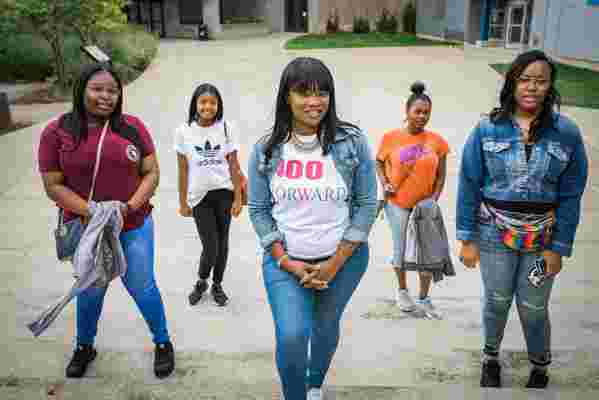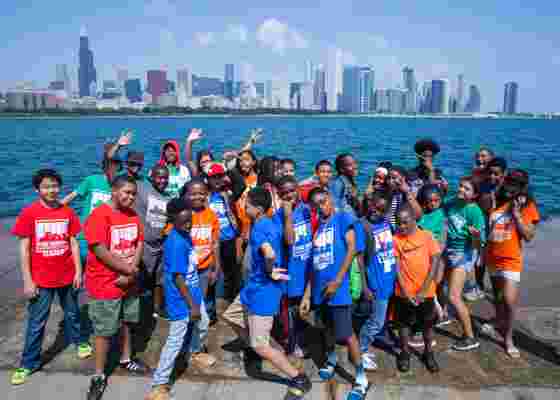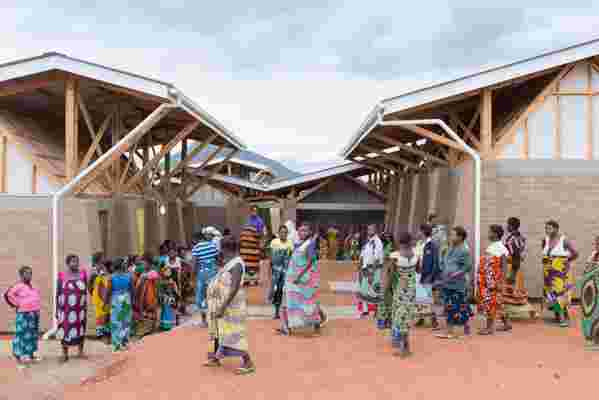How buildings and communities are constructed tells complex stories about the people who built them, along with their values and ideas. Are they monuments to the builder's ego? Do they serve the public interest? From long lines at public restrooms for women to neighborhoods split by railroad tracks, too often input is left out from the people who will use them most. Perhaps that's because architects themselves are still a fairly homogenous lot: Today, just one in five identify as a racial or ethnic minority. Luckily, a new wave of young talent is emerging, because diversity isn't just about giving more people a seat at the table; it also helps designers approach and solve problems in entirely new ways—and that's good for everyone.
Deanna Van Buren, Designing Justice + Designing Places
After visiting a prison to teach a design class, Deanna Van Buren began to imagine a world beyond incarceration. Van Buren, cofounder and design director of Designing Justice + Designing Spaces , envisioned “a criminal justice system based on reparation rather than restitution.” These empathic, human-centered spaces offer a paradigm shift in how we address crime, allowing victims to feel heard and “restoring” justice to entire communities rather than doling out punitive punishments. The first of these “peacemaking centers” opened in Syracuse, New York; another is under construction in Van Buren's hometown, Oakland, California. Other projects include a resource bus for women getting out of prison, with design input from 30 female inmates.
Tiffany Brown, Urban Arts Collective and 400 Forward

Tiffany Brown of 400 Forward, center, and her mentees.
African American women make up just .003 percent of all architects in the United States, but Tiffany Brown's 400 Forward initiative—named for 400th black woman of all time to become a licensed architect, who did so in 2017—aims to get young girls interested in STEAM education, mentor them as early as elementary school, and support them through licensure. A Detroit native, Brown—who is also a cofounder of the Urban Arts Collective and holds an MBA—has made a career out of raising awareness about how planning and design can impact urban communities, behavior, and health. “The biggest impediment to careers in design for the kids I work with is exposure and seeing themselves in positions of success,” says Brown, who wants to be “the face I was looking for growing up, especially for girls.”
Michael Ford, the Hip Hop Architect

Michael Ford, a.k.a. the Hip Hop Architect, explores the intersection of design and culture. Arguing— very convincingly —that the built environment gave birth to hip-hop culture itself, he brings this idea to underserved youth via his Hip Hop Architecture Camp , which uses music and culture as a catalyst to introduce concepts of urban planning, architecture, design, and economic development. Campers come up with creative visions for their own communities, build physical and digital models, and then make a music video. But the ultimate outcome of the camp—an initiative of Detroit-based Urban Arts Collective, which Ford cofounded—may yield an even more important result: an entirely new approach to architecture itself.
MASS Design Group

The Maternity Waiting Village in Malawi, designed by MASS.
Begun in 2008 by students at Harvard University's Graduate School of Design, MASS Design Group —the firm behind the outstanding Memorial for Peace and Justice in Montgomery, Alabama—describes its approach as “design that heals.” MASS, which stands for Model of Architecture Serving Society, believes that putting public interest first will help evolve architecture and that asking for input from the people who will use it empowers those same people. Take, for example, the group's Maternity Waiting Village in Malawi, which provides space for expectant mothers to stay as they near term. By putting them within reach of a health care center, the community has significantly reduced maternal mortality.
Bryan Lee, Colloqate
Returning from Sicily to New Jersey as an 11-year-old military kid, Bryan Lee experienced what he calls a “shock wave of difference” between Italy's public piazzas and Trenton's uninviting civic design. Later, in college and graduate school, he observed a noticeable lack of diversity. The experiences led him to found New Orleans-based Colloqate , focused on design justice for social, civic, and cultural spaces. Colloqate's advocacy campaigns, such as Paper Monuments, pair scholarly information and artwork to tell obscured histories, explore public proposals, and protest unjust power structures via large-scale posters and billboards. For the Claiborne Innovation District, the firm is transforming 19 blocks beneath an elevated expressway into an economic center with green infrastructure, local vendors, and public meeting space based on input from thousands of residents.
Liz Ogbu, Studio O
Ogbu's shelter for immigrant day laborers in the U.S. at a Cooper Hewitt exhibition.
An architect, urbanist, and social innovator, Liz Ogbu is the principal of Studio O , where she takes a multidisciplinary approach to advocating for social and spatial justice. Focused on challenged urban environments around the world, her empathic, human-centered approach has resulted in designs such as an innovative shelter for immigrant day laborers in the U.S. to innovative sanitation facilities and clean-water enterprises in Africa. Gentrification is a particular passion for Ogbu, whose recent TED Talk discusses her collaboration with Pacific Gas & Electric, NPR's Story Corps, and residents of San Francisco's Hunters Point neighborhood to develop a former power station into a community that respects both old and new.
RELATED: These Designs Have Made the World a Much Better Place
